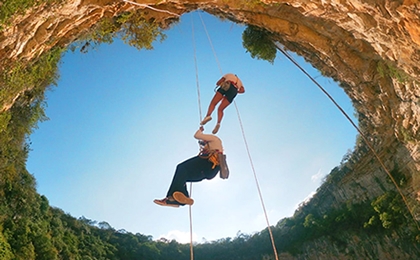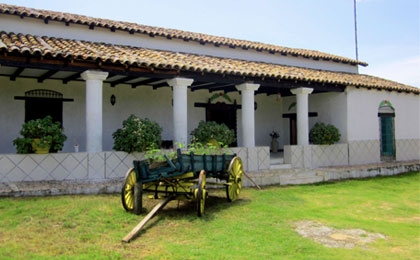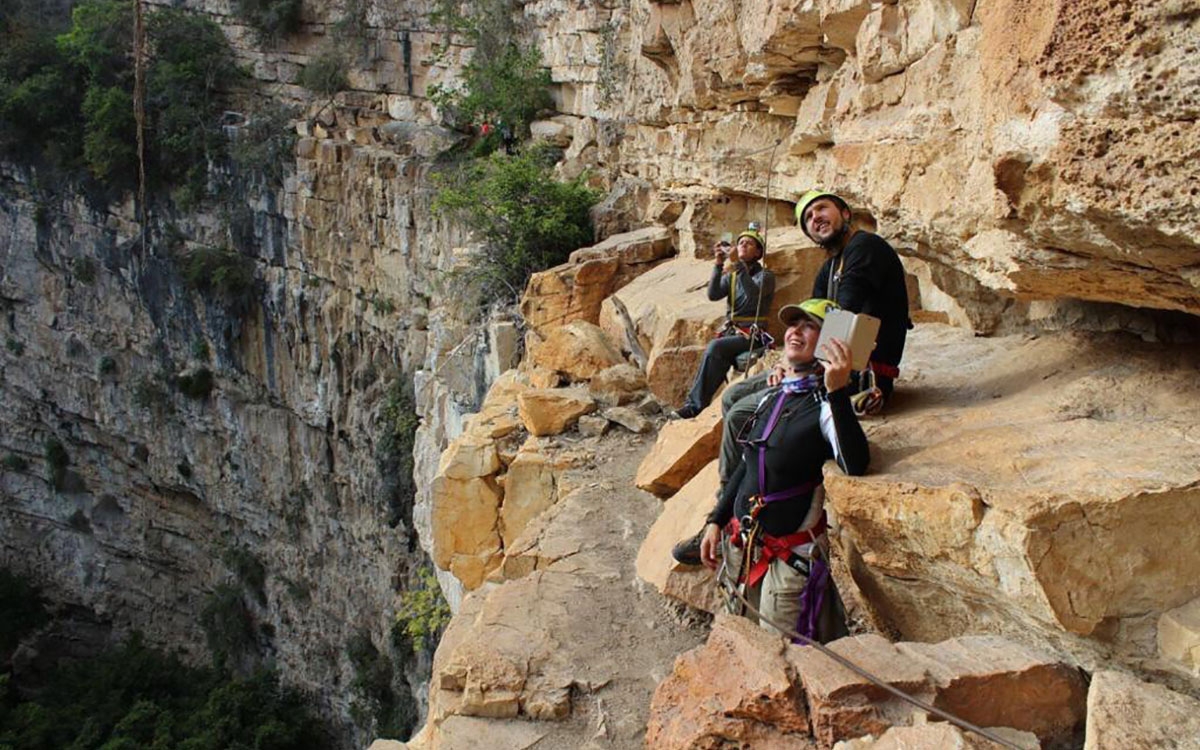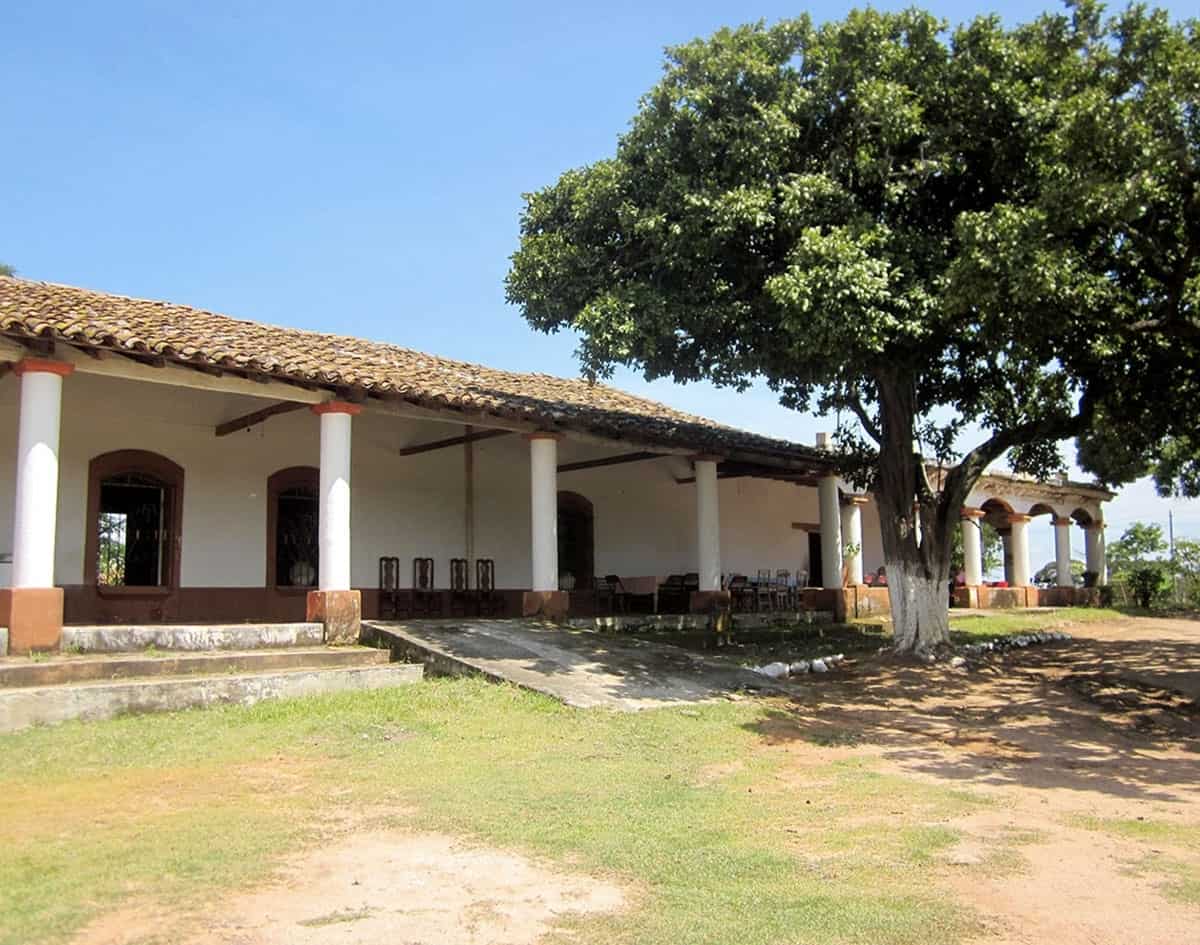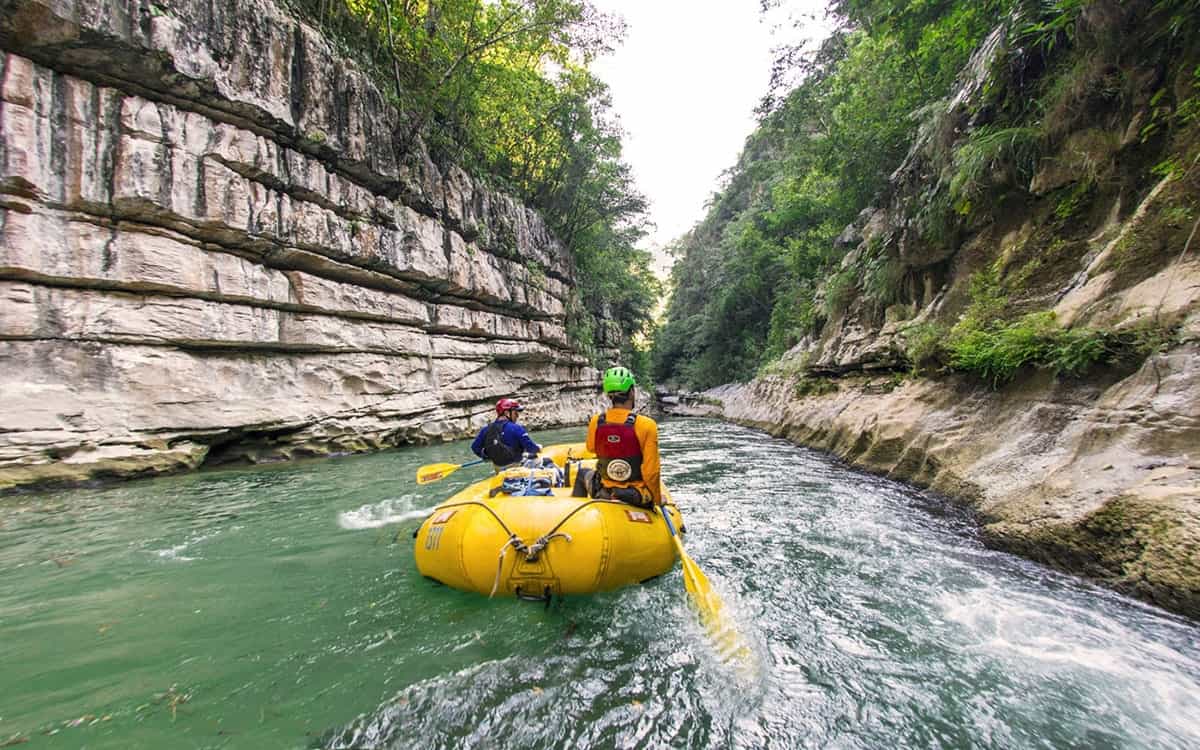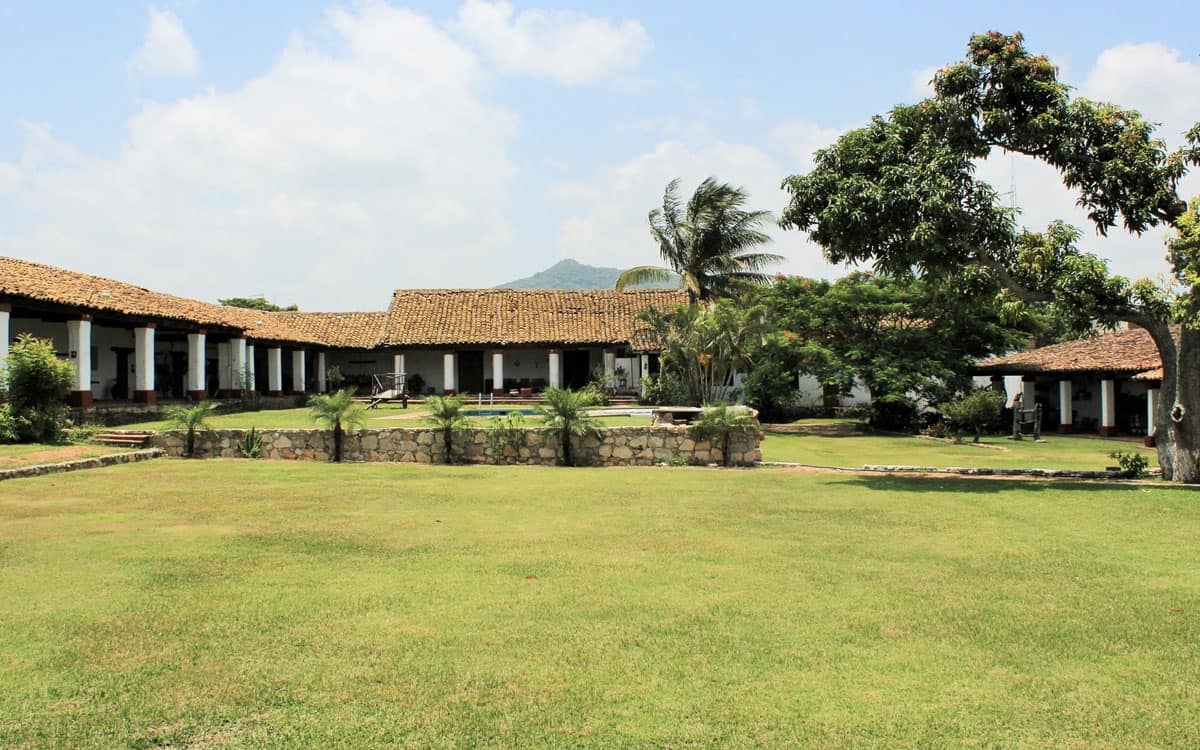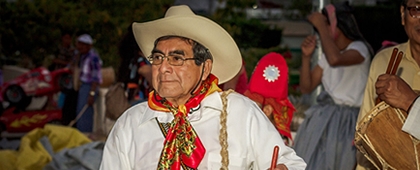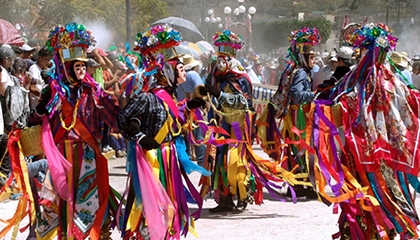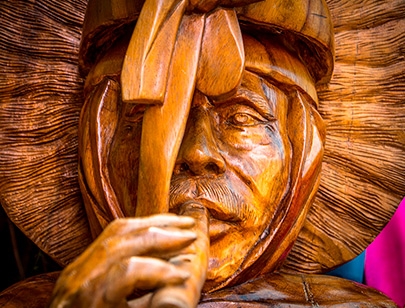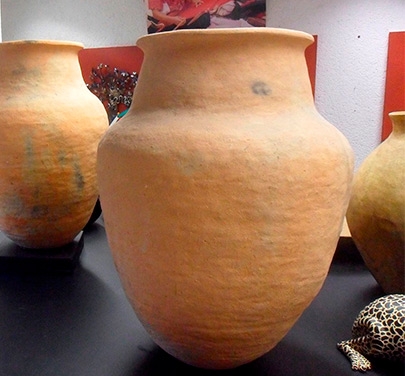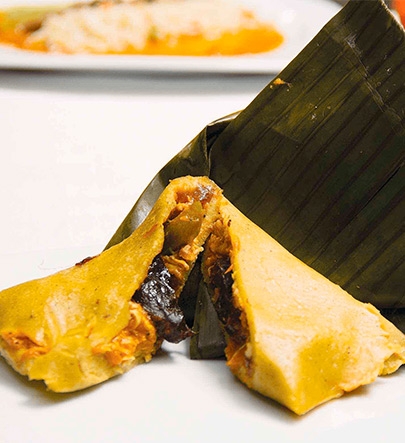

In this area of the state there has been a Zoque settlement since pre-Hispanic times. They gave their environment a meaning, which made the landscape a connection with the deities of the sky, water, wind and earth. Touring the sites of the sacred geography gives a new meaning to the trip through Chiapas. The hill of La Chumpa in Jiquipilas, the hill of Mactumactzá -which watches over Tuxtla Gutiérrez-, the canyons of La Venta River and El Sumidero, are sacred refuges full of legend and devotion.
During colonial times, many cattle ranches and agricultural estates flourished in western Chiapas. Some of these farms or haciendas are part of rural or adventure tourism. El Zapote, La Valdiviana, La Providencia and Las Cruces, in the municipality of Cintalapa, are some of the haciendas that can be visited. They are old constructions, mainly from the 19th century, partly restored for rural tourism, a practice that is growing little by little in the state of Chiapas.
The old haciendas or farms are milestones in the history of Chiapas. Their lands were part of the cultivation of indigo, corn, beans, sugar cane and henequen, a product exploited in the last decades of the 19th century and the beginning of the 20th century. The houses have wide corridors, with attached chapels. The presence of African slaves in colonial times also turned them into places of diffusion of the marimba, an emblematic instrument of Chiapas.
Living cultures
In Chiapas there are currently 12 different indigenous languages spoken, whose speakers, in addition to having a common language that identifies and characterizes them, preserve their particular dress, beliefs, traditions and way of being, a situation that gives them uniqueness and shape the country as a colorful and varied cultural mosaic.
In this geographical area of Chiapas, one of the least studied groups predominates, which makes it even more fascinating: the Zoques, who occupy the northwestern part of the state of Chiapas and whose language is disappearing due to the passage of modernity. The women continue to wear traditional clothing on special days, consisting of a long colored or checkered skirt, depending on the region, and a huipil or white blouse with extraordinary embroidery around the neck.
The traditions and customs that are still preserved today, sustain their ethnic identity. The ritual practices and pre-Hispanic beliefs that still survive today as vestiges of the festivals and rituals of our primitive indigenous roots that united us thanks to the geography, language and history of this wonderful culture.
Traditional holidays
January

January 6
Dance of Kings and Queens
Place: Ocozocoautla de Espinosa, Chiapas

January 12 to 15
Festivities in Honor of the Lord of Esquipulas
Place: Chiapas

January 28 to February 2
Candelaria Fair, Cintalapa de Figueroa
Place: Cintalapa, Chiapas

January 30 to March 23
Descent of the Little Virgins of Copoya
Place: Tuxtla Gutiérrez, Chiapas
February

February 2
Candlemas Day
Place: Chiapas

February 14 to 18
Carnaval Zoque Coiteco
Place: Ocozocoautla de Espinosa, Chiapas
March

March 23
Zoque Equinox – Spring Dance
Place: Ocozocoautla de Espinosa, Chiapas

March 29 to April 5
Easter in Chiapas
Place: Chiapas
April

April 25
Day of San Marcos
Place: Tuxtla Gutiérrez, Chiapas
May

May 3
Day of the Holy Cross
Place: Chiapas

May 3
Copotí Dance
Place: Ocozocoautla de Espinosa, Chiapas
June

June 23 to 25
Feast of Saint John the Baptist
Place: Ocozocoautla de Espinosa, Chiapas
August

August 4
Day of Santo Domingo de Guzmán
Place: Chiapas

August 8 to 24
Festivity in Honor of Saint Roque and Saint Bartolomé the Apostle
Place: Tuxtla Gutiérrez, Chiapas

August 10 to 15
Feast of the Virgin of the Assumption, Ocozocoautla
Place: Ocozocoautla de Espinosa, Chiapas

August 15
Dance of Moors and Christians
Place: Ocozocoautla de Espinosa, Chiapas
September

September 8
Pashtú Dance
Place: Ocozocoautla de Espinosa, Chiapas

September 13 to 16
Fiestas Patrias in Chiapas
Place: Chiapas
October

October 11 to 22
Festivity in Honor of the Lord of Calvary
Place: Tuxtla Gutiérrez, Chiapas
November

November 14 to 16
El Mequé: A Celebration for Everyone
Place: Tuxtla Gutiérrez, Chiapas

November 28 to December 14
Chiapas Fair
Place: Tuxtla Gutiérrez, Chiapas

November 13 to 15
International Marimbista Festival
Place: Tuxtla Gutiérrez, Chiapas

November 14 to 22
Festivity in Honor of Saint Cecilia
Place: Tuxtla Gutiérrez, Chiapas
December

December 12
Day of the Virgin of Guadalupe
Place: Chiapas

December 19 to 21
Christmas
Place: Chiapas

December 24 to 31
Dance of Shepherds and Shepherdesses
Place: Ocozocoautla de Espinosa, Chiapas

December 24 to February 2
Child Jesus Celebrations (Sentadas de Niño)
Place: Chiapas
Discover and explore
Natural reserves
Chiapas surprises for its biodiversity, but also for its natural resources, as well as for the tourist possibilities found in its great rivers, lakes, majestic mountains and multitude of canals and estuaries on the coast, with their own characteristics that form an intricate network of possibilities where plant and animal life has found the ideal environments for each form of life represented in Chiapas.
This region of Mexico is one of the areas with the greatest biodiversity established in a variety of habitats distributed in the numerous ecosystems. For this reason, it is said that with the exception of the desert and the eternal snows, all the environments that are present in the national territory are found in this wonderful land, "Chiapas".
Adventure trip
Colonial art and historical monuments
Museums
Folk arts
In Tuxtla Gutierrez it is possible to acquire handcrafted products from all over the state, textiles, pottery, wood sculptures, basketry, among others. The store of the "Instituto Casa de las Artesanías de Chiapas" is an excellent option to acquire high quality products.
In the traditional markets it is possible to acquire various pieces of amber jewelry, the Chiapas gem, as well as leather or tin articles.
Also, it is said that Berriozábal is the cradle of the great masters of aparejo, a technique that consists in the elaboration of hammocks. In this place, only 20 minutes from the city, you can find hammocks of exceptional quality made by the wise artisans.
In Ocozocoautla de Espinosa, objects of singular beauty are made, such as drums and rattles, among others. With carved wood masks of the main characters are made for the Zoque Coiteco carnival; in addition to the elaboration of pottery in the neighboring town of Ocuilapa, which together with Cintalapa produce high quality ceramics.
Gastronomy
Many of the customs and traditions that make up the soul of Chiapas have come down to the present from the haciendas. The first marimbas, the iconic instrument of Chiapas. The west of Chiapas is a land of surprises, the haciendas, the wide agricultural and livestock valleys are preserved. Zoque elements are also preserved and prodigious natural spaces such as the Cañón de la Venta and the Sima de las Cotorras are shown. In gastronomy, the autochthonous elements of the ancestral milpa converge, as in music, with European, African and even recent Asian elements. It is a land to enjoy, for example, tamales in an unusual variety such as chipilín or jacuané, accompanied by the notes of the marimba.
Chiapas Romantic
For those who prefer to make their dreams come true in a modern city, with first class services and state-of-the-art venues, along with beautiful panoramic views of the city from above or, if desired, the ambiance of beautiful gardens; this route has everything to make it happen.

Unique experiences
Service providers

 Learn more
Learn more Route destinations
Route destinations Living cultures
Living cultures Traditional holidays
Traditional holidays Discover and explore
Discover and explore Natural reserves
Natural reserves Adventure trip
Adventure trip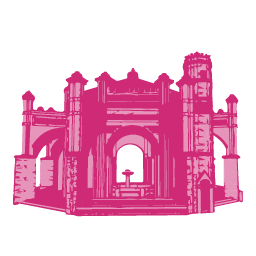 Colonial art and historical monuments
Colonial art and historical monuments Museums
Museums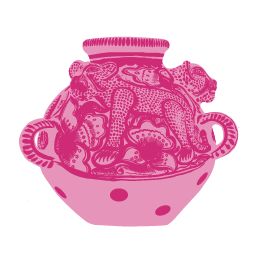 Folk arts
Folk arts Gastronomy
Gastronomy Chiapas Romantic
Chiapas Romantic Unique experiences
Unique experiences Service providers
Service providers





